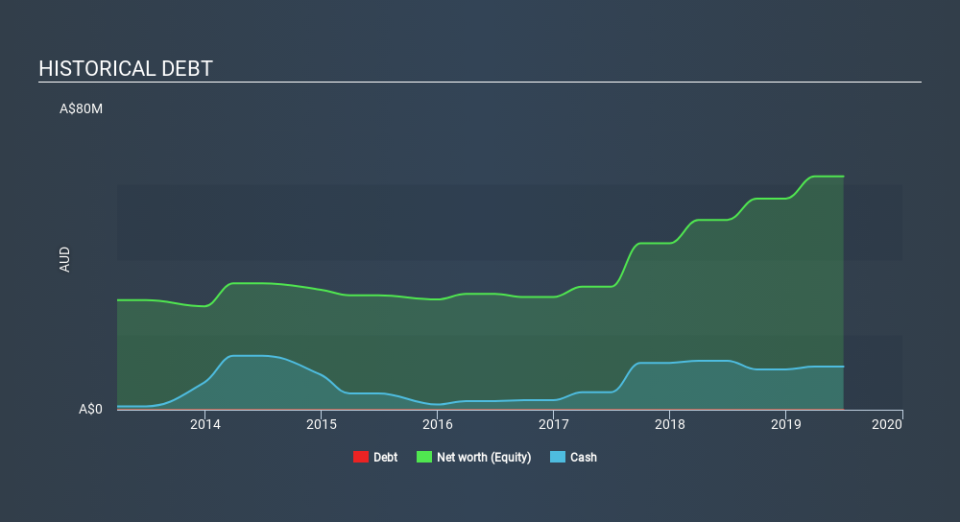Introducing KGL Resources (ASX:KGL), A Stock That Climbed 48% In The Last Five Years

When we invest, we're generally looking for stocks that outperform the market average. And while active stock picking involves risks (and requires diversification) it can also provide excess returns. For example, the KGL Resources Limited (ASX:KGL) share price is up 48% in the last 5 years, clearly besting the market return of around 4.1% (ignoring dividends).
Check out our latest analysis for KGL Resources
With just AU$261,521 worth of revenue in twelve months, we don't think the market considers KGL Resources to have proven its business plan. So it seems that the investors focused more on what could be, than paying attention to the current revenues (or lack thereof). For example, investors may be hoping that KGL Resources finds some valuable resources, before it runs out of money.
We think companies that have neither significant revenues nor profits are pretty high risk. There is usually a significant chance that they will need more money for business development, putting them at the mercy of capital markets. So the share price itself impacts the value of the shares (as it determines the cost of capital). While some companies like this go on to deliver on their plan, making good money for shareholders, many end in painful losses and eventual de-listing.
KGL Resources had cash in excess of all liabilities of just AU$7.5m when it last reported (June 2019). So if it hasn't remedied the situation already, it will almost certainly have to raise more capital soon. It's a testament to the popularity of the business plan that the share price gained 126% per year, over 5 years , despite the weak balance sheet. You can see in the image below, how KGL Resources's cash levels have changed over time (click to see the values). You can click on the image below to see (in greater detail) how KGL Resources's cash levels have changed over time.
In reality it's hard to have much certainty when valuing a business that has neither revenue or profit. One thing you can do is check if company insiders are buying shares. It's often positive if so, assuming the buying is sustained and meaningful. Luckily we are in a position to provide you with this free chart of insider buying (and selling).
What about the Total Shareholder Return (TSR)?
Investors should note that there's a difference between KGL Resources's total shareholder return (TSR) and its share price change, which we've covered above. The TSR attempts to capture the value of dividends (as if they were reinvested) as well as any spin-offs or discounted capital raisings offered to shareholders. We note that KGL Resources's TSR, at 53% is higher than its share price return of 48%. When you consider it hasn't been paying a dividend, this data suggests shareholders have benefitted from a spin-off, or had the opportunity to acquire attractively priced shares in a discounted capital raising.
A Different Perspective
Investors in KGL Resources had a tough year, with a total loss of 25%, against a market gain of about 3.5%. Even the share prices of good stocks drop sometimes, but we want to see improvements in the fundamental metrics of a business, before getting too interested. Longer term investors wouldn't be so upset, since they would have made 8.9%, each year, over five years. It could be that the recent sell-off is an opportunity, so it may be worth checking the fundamental data for signs of a long term growth trend. I find it very interesting to look at share price over the long term as a proxy for business performance. But to truly gain insight, we need to consider other information, too. Take risks, for example - KGL Resources has 7 warning signs (and 2 which are concerning) we think you should know about.
If you like to buy stocks alongside management, then you might just love this free list of companies. (Hint: insiders have been buying them).
Please note, the market returns quoted in this article reflect the market weighted average returns of stocks that currently trade on AU exchanges.
If you spot an error that warrants correction, please contact the editor at editorial-team@simplywallst.com. This article by Simply Wall St is general in nature. It does not constitute a recommendation to buy or sell any stock, and does not take account of your objectives, or your financial situation. Simply Wall St has no position in the stocks mentioned.
We aim to bring you long-term focused research analysis driven by fundamental data. Note that our analysis may not factor in the latest price-sensitive company announcements or qualitative material. Thank you for reading.

 Yahoo Finance
Yahoo Finance 
